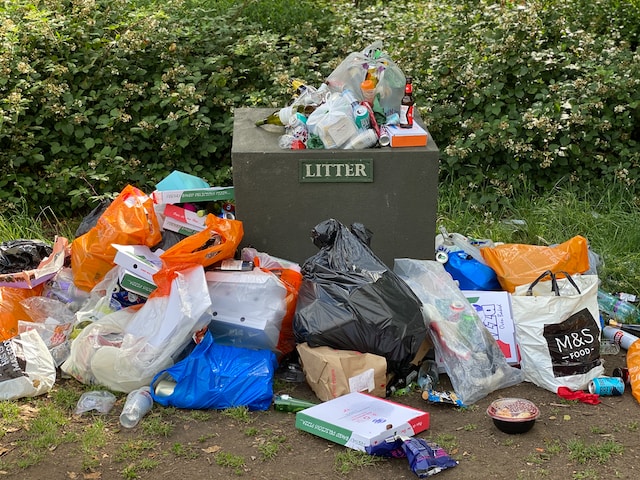Infinity Restoration is expert at conducting construction projects that are business-oriented. They are accustomed to the unique functions that are required of large-scale construction projects like ensuring timely completions and complying with building codes.
They are also proficient in overcoming major challenges like weather conditions, material shortages, labor shortages and safety risks. They will ensure that the project progresses with a high level of quality.

Licensed General Contractors oversee the on-site process of building a construction project. They are responsible for a wide variety of tasks including coordinating workers, procuring materials and hiring specialty contractors to complete the project. They also manage budgets and schedules. A GC’s experience and expertise can make or break a project, steering it to stay as close as possible to your dreams, budget and city specifications.
A GC may have their own crew of laborers and carpenters who “self-perform” some labor on projects, however, they almost always utilize a multitude of specialist subcontractors to complete the majority of work on projects. This allows a GC to be more involved in the managerial aspect of the construction process and focus on finding the best, most cost-efficient materials to meet your needs.
Another major responsibility for a GC is managing the payment chain, the system that ensures money moves through the proper channels to pay everyone in the construction process. This can be very complicated, especially for larger commercial projects as payments often move down several tiers of contractors and suppliers. A good GC can keep these payments moving efficiently, helping everyone involved get paid on time.
In addition to being licensed, a GC should be insured and have worker’s compensation coverage. Having this protection will help in the event that someone is injured on the job site. Lastly, it’s important for the GC to have a solid network of reputable, reliable subcontractors who can perform specialized services like drywall installation and flooring. The GC will often work closely with these subcontractors to guarantee the project is completed on time, in budget and according to specifications.
Construction Manager
Whether working as an employee or independently contracted, a construction manager (CM) ensures a commercial project’s success by directing and monitoring contractors and subcontractors. CMs work with the project owner, engineer, architect and/or designer during pre-construction and construction phases. They manage all aspects of the build and oversee budgets, schedules, and other important aspects of the job such as coordinating permits, reviewing plans and specifications, selecting subcontractors, and providing quality control.
CMs often work out of an office, but frequently travel to construction sites to monitor progress and make daily decisions. They also work closely with architects and engineers, providing their specialized expertise to the overall team.
As the leader of the building and management teams, CMs recruit, hire, and train their crews to be sure everyone is well-informed about the project. They also monitor the building’s progression through each phase of construction, and are responsible for documenting each step, ensuring that all steps are done properly, on time, and within budget.
They’re also the go-to person for all things budget-related, and they need to know how to negotiate contracts and resolve conflicts. They are the ones who will likely need to make difficult decisions to ensure that the final product is a high-quality, affordable project for all stakeholders.
Throughout construction, a CM is the point of contact for client relations and communicates regularly with clients, addressing their questions and concerns. They also assess changes to the project and manage their implementation. In addition, a CM is in charge of providing upper management with reports on a regular basis. They need to be mindful of what information is being requested by management and provide the right amount of detail that satisfies their request.
Project Manager
The project manager oversees a variety of duties to bring a commercial construction or remodeling job to its final completion. This includes working with the general contractor to create and manage a schedule, ensuring the work is being completed as expected and in accordance with the budget. The project manager also handles all communications with stakeholders, managing the project team and taking action to resolve any issues that arise.
This is a role that requires the ability to understand and utilize the strengths of individual team members as well as being able to identify potential weaknesses. It is often seen in fields such as engineering, healthcare and IT where large projects have many different parts that need to be coordinated and assembled in a specific order to meet deadlines and deliverables.
A good project manager will have a strong understanding of the entire project life cycle from start to finish. They will be able to identify the key components and milestones that are required to complete the project on time, within budget and in line with all stakeholder expectations. This will include the initial planning phase which involves defining project goals, creating a plan of action, setting deadlines and outlining major risks or obstacles that may be encountered along the way.
The next stage of the project management process is executing the plans and managing the project team. During this phase, the project manager will be responsible for assigning and coordinating tasks, monitoring progress, identifying and managing changes to the project scope and implementing processes for quality assurance. This is followed by the closing process which is the evaluation of the results compared to the objectives and closure of contracts, paying external invoices, reallocating internal resources and archiving records.
Construction Superintendent
A construction superintendent works on-site or in the field to manage the day-to-day operations, directing craft workers and ensuring that the job site is safe for everyone. This position is more hands-on than the Project Manager role and typically requires a higher level of education (such as an associate or bachelor’s degree in Civil Engineering, Construction Management, Architectural Engineering or a related subject). In smaller construction companies it’s common for one person to hold both the Superintendent and Project Manager roles.
As the eyes and ears of the Project Manager at the jobsite, a Superintendent helps monitor progress, enforces quality procedures and ensures that the project stays on schedule. Superintendents often start their careers as skilled trades workers and have a deep understanding of building methods. They may also be tasked with interviewing and hiring subcontractors or on-site employees. In some instances, they are responsible for arranging training programs for workers.
In this role, it’s important for superintendents to have a sense of pride in their work and the structures that they build. They should be able to motivate the construction team, especially when things get challenging. They must also be aware of mental health challenges that may affect their teammates.
Project Managers and Superintendents should communicate regularly, as often as every day. The Superintendent brings a detailed understanding of the work that’s currently being performed, while the Project Manager has an overview of the project schedule and other administrative considerations like obtaining permits. Getting these two positions in sync early on can help prevent conflicting priorities from developing.
Materials Manager
A materials manager oversees a facility’s purchasing and inventory functions to ensure that supplies are available. They work with suppliers and vendors to negotiate contracts, ensuring that prices are fair for their company’s budget goals. They also manage shipping and receiving procedures to ensure that materials are delivered on time for production schedules.
A career in materials management can be highly rewarding. The average salary for a materials manager is $141,139. The skills required to succeed in this profession include analytical thinking, teamwork, organizational skills and leadership.
Materials management is an essential business function that combines purchasing, logistics and inventory management. It helps manufacturers maintain an unbroken supply chain for production purposes and meet customer demand. Effective materials management can reduce costs for a product and improve quality by ensuring that the appropriate components are available when needed.
In addition to ensuring that materials are ready for manufacturing, materials managers also monitor inventories and stock supplies to assess whether there are any discrepancies. They must be able to identify problems quickly and resolve them with minimal disruption to production. They are also responsible for determining which material types should be kept in stock and creating inventory levels for each type.
For this reason, it is important to have good communication and interpersonal skills to be a successful materials manager. They must be able to build relationships with their vendors and communicate effectively with staff members and executives. They also need to have clinical knowledge of healthcare products and basic math skills to accurately assess inventory needs. To be effective in their role, materials managers must also be able to negotiate fair prices and settle vendor complaints.
